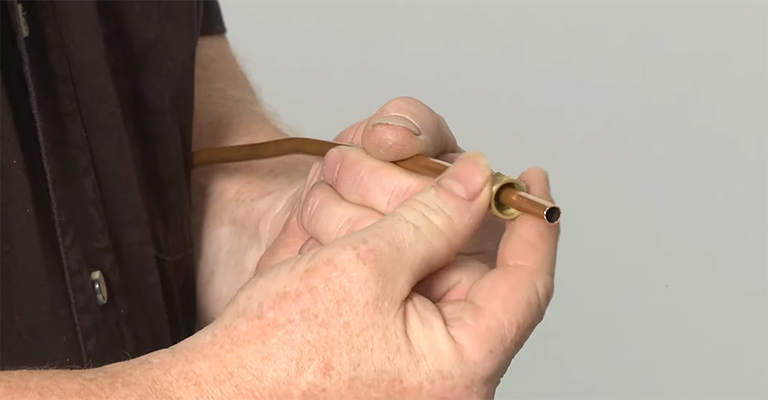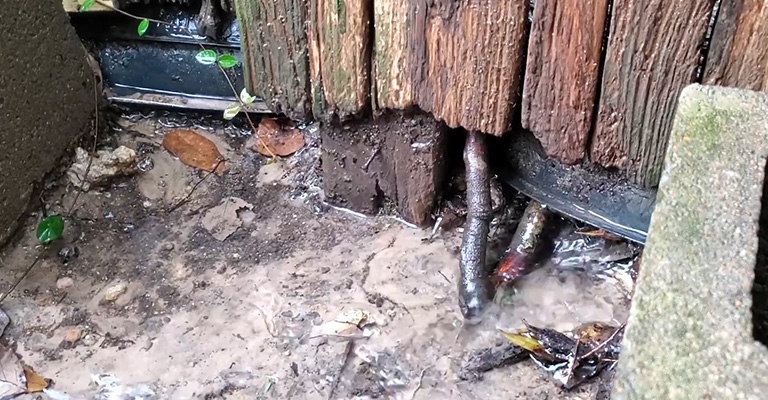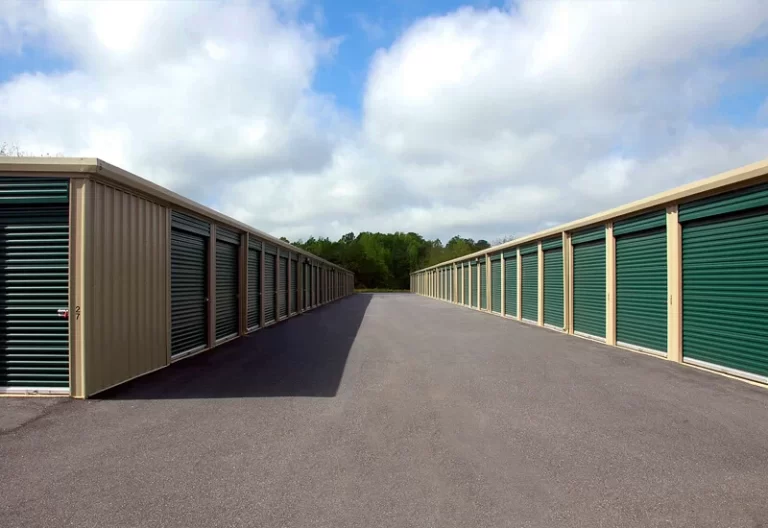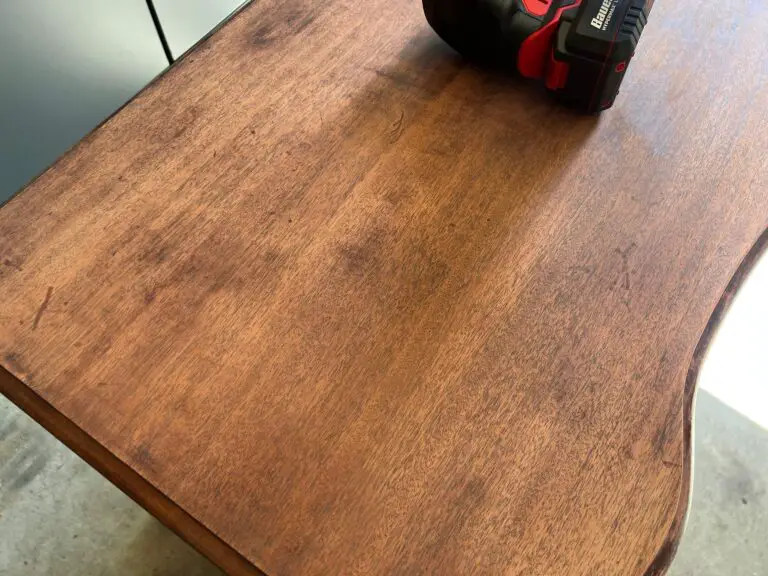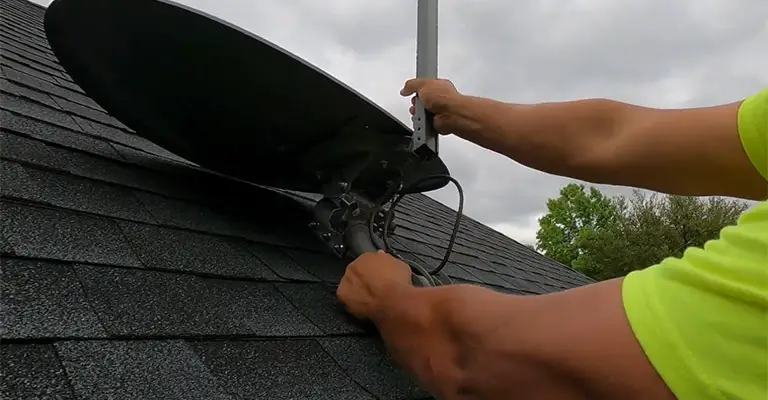Just Filled Pool With Water, Now What?
After you fill your pool with water, you will still need to check some things. This includes safety for children, testing the water, adding balancers and clarifiers, and shocking your pool. Once you complete these steps, it is safe to say your pool is ready for use.
What to Do After Filling Pool With Water?
Nothing beats spending time in the swimming pool with your family on a hot scorching day of summer. But before jumping right in, there are some necessary steps you should take to prepare your pool.
There are a bunch of safety checks, testing, and balancing required after filling your pool with water. Some of these steps involve the use of chemicals. So, here is a detailed guide for you so that you can understand the process better.
Use Safeguard for Children
One of the leading causes of injury-related death among children is drowning, which, in most cases, happens in the pool. So, you must take precautionary measures to prevent such undesirable occurrences.
If you have children, you may use a fence around the pool as a safeguard. You should also use locks and alarms in doors and windows, especially in those which can be used to access the pool area. Also, keep your children under strict supervision when they are in the pool area.
Vacuum and Remove Debris
Even you may already have vacuumed the bottom of the pool before filling it with water, it is likely that debris may have entered inside the pool again. To avoid damage to your pool liner from lingering debris, vacuum the bottom of the pool one more time. Use a pool skimmer to remove the floating debris from the surface.
Test and Balance the Water
After vacuuming, you need to test the chemical balance of the water. For that, first, you need to find a proper testing kit or test strips. Try to avoid using testing kits from old stock, otherwise, you may get inaccurate results.
PH Level Test
pH indicates the acidity of water. The pH scale ranges from 0 to 14 with 7 being considered as the neutral value. The ideal value of pH is considered 7.4 for swimming pool water.
It is recommended to keep the pH between 7.2 and 7.6. Even with the slight deflection from the recommended value, the swimmers may experience problems like irritation of eyes and skin, rashes, etc.
How to Adjust PH Level
Though the chlorine works well at low pH levels, the water becomes acidic and slightly corrosive if it falls below 7.0. The most common way to increase pH level is soda ash. For 10,000 gallons of water, if you intend to raise the pH level by 0.2, you need to use 6 ounces of soda ash.
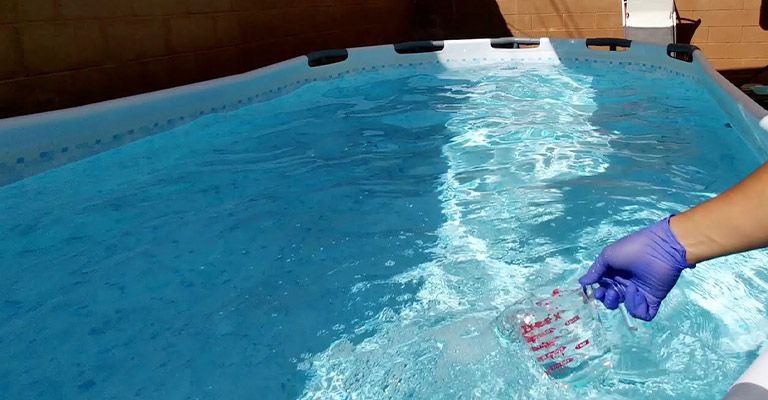
If the pH level rises above 8.0, the water becomes very basic which causes a slow reaction of chlorine. To decrease the level, you need to use pH reducers, which have either muriatic acid or sodium bisulfate as their main ingredient.
Total Alkalinity Test
The alkalinity level is an important factor for swimming pool water, abnormal levels may cause damage to the pool equipment. The recommended alkalinity level ranges between 80 and 120 ppm.
How to Adjust Alkalinity Level
If the total alkalinity of your pool water is below the recommended level, use an alkalinity increaser product. These products have sodium bicarbonate as the main active ingredient.
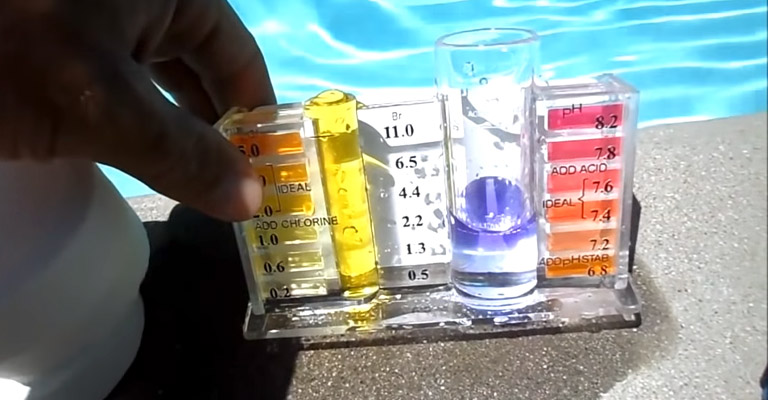
For high alkaline waters, use alkalinity reducer products containing muriatic acid and sodium bisulfate. Adjusting the alkalinity level may result in altered pH levels sometimes. So, it is recommended to check the pH levels after adjusting alkalinity.
Calcium Hardness Test
Maintaining the calcium hardness of the pool water is crucial. Low calcium levels may cause aggressive water conditions, such as etching, staining, and deposits. On the contrary, high calcium levels can make the water look cloudy and may clog the water flow. The recommendation is to maintain the hardness level between 150 to 400 ppm.
How to Adjust Calcium Hardness
You can use a calcium hardness increaser product which usually contains calcium and magnesium to increase the calcium level. If you have a high calcium level, it is better to replace the water. This time, try to use a source that has less calcium hardness level.
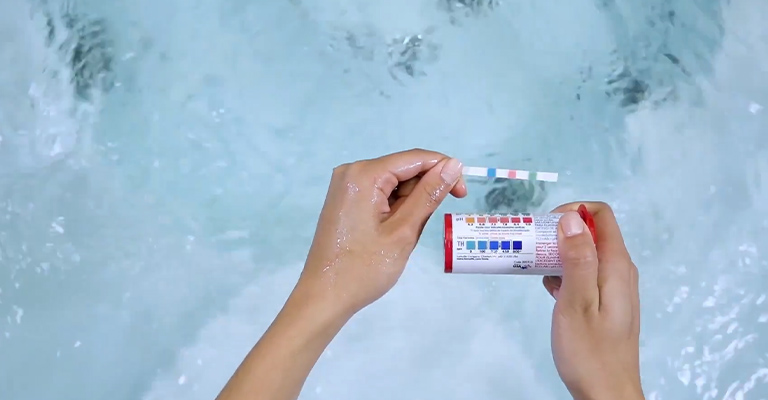
Metal Presence Test
If you see a greenish color in the pool water, you may think it’s because of algae. Though it can be true, for a newly filled pool it is more likely due to metals like iron and copper.
The presence of these metals can be tested using a metal test kit, which may be included in the test kit mentioned before. If not, then you will need to buy it separately.
How to Get Rid of Unwanted Metals
If the test kit shows a positive result, you will need to use a pool metal removal chemical. Most of the products are suitable for inserting in your skimmer basket or your pump.
Tips for Using Balancers
- Add one balancer chemical at a time.
- Use a pool brush to distribute the chemicals properly. Run the filter pump while adding chemicals.
- Re-test the water 8-10 later after adding the chemicals.
Add Clarifier
Once you are done testing and balancing the water, add a clarifier to take out the tiny particles. Run the filter pump again after adding the clarifier. Let the filter pump run at least 24 hours before moving to the next step.
Add Sanitizer and Algaecide
Sanitizer kills bacteria and prevents the growth of viruses in the pool water. The most common sanitizer for pool water is chlorine. To raise the chlorine level, shock the pool using a shocking mixture. Let the filter pump run at least for an hour when you add the mixture.
Use the shock in the evening so that they can work their magic overnight. Test the chlorine level the next morning. It should be between 1 and 3 ppm. Aftershock treatment, add algaecide to support chlorine.
Wait 24 hours after the shock treatment to settle everything properly, and your pool should be ready to use.
Learn more about home improvement techniques.
FAQ
1. Can I use bleach to shock my pool?
Answer: You can use bleach to shock your pool. But first, you must know the proper amount of bleach you need to use. You will need 48 oz of bleach per 10,000 gallons of water. Find out how many gallons of water does your pool hold then calculate the amount of bleach you need.
2. What time of day should I add chlorine to my pool?
Answer: UV rays from the sun can reduce the free chlorine level of the pool water resulting in ineffective shock treatment. So, it is best to add chlorine to the pool when the sun is down.
3. How Much Does It Cost to Resurface a Pool?
The national average cost to resurface a pool is $6,500 while it can cost between $1,000 to $10,000 depending your needs.
Final Thoughts
Preparing your pool after filling it with water is crucial to avoid any injuries or skin problems. If you find it overwhelming to use many chemicals in your pool, there are other alternatives. You can turn your pool into a saltwater pool which will allow you to avoid chemicals as well as lower the maintenance cost.

